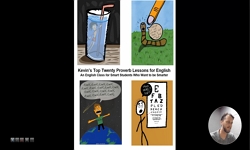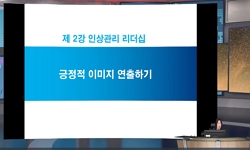The orality and the collectivity are preconditions for proper reading and understanding of “Clean Tamir River”, since they contains the writer’s ideology and spirit. The orality of “Clean Tamir River” is shown in its short sentence, conversa...
http://chineseinput.net/에서 pinyin(병음)방식으로 중국어를 변환할 수 있습니다.
변환된 중국어를 복사하여 사용하시면 됩니다.
- 中文 을 입력하시려면 zhongwen을 입력하시고 space를누르시면됩니다.
- 北京 을 입력하시려면 beijing을 입력하시고 space를 누르시면 됩니다.

『맑은 타미르강』의 구술성과 민중성 - 속담과 민요를 중심으로 - = The Orality and the Collectivity of “Clean Tamir River” - Focusing on proverb and folk song -
한글로보기https://www.riss.kr/link?id=A104047944
-
저자
이성준 (제주대학교)
- 발행기관
- 학술지명
- 권호사항
-
발행연도
2015
-
작성언어
Korean
-
주제어
Clean Tamir River ; orality ; collectivity ; proverbs ; folk songs ; short sentence ; intervention of the speaker ; 맑은 타미르강 ; 구술성 ; 민중성 ; 속담 ; 민요 ; 짧은 문장 ; 화자 개입
-
등재정보
KCI등재
-
자료형태
학술저널
- 발행기관 URL
-
수록면
103-131(29쪽)
-
KCI 피인용횟수
1
- DOI식별코드
- 제공처
-
0
상세조회 -
0
다운로드
부가정보
다국어 초록 (Multilingual Abstract)
However, utilizing proverbs and folk songs can be seen as its significant orality. Proverbs are linguistic heritages that imply agelong experience, lessons, value, and wisdom of the people. 97 proverbs are used 102 times in “Clean Tamir River”. It is a significant narrative technique in the way that the proverbs try to convey lessons and truth of life to readers as well as the people’s wisdom, view of life, value, and consciousness. Folk songs are the most popular and self-sufficient art. Rodoidamba expresses the people’s life and consciousness vividly using this character of folk songs.
Furthermore, they turn the lively life in Mongolia into a movie strengthening the factor of background music. Thus, “Clean Tamir River” embodies the dynamic life of Mongolian and shows their consciousness on the basis of orality and popularity.
The orality and the collectivity are preconditions for proper reading and understanding of “Clean Tamir River”, since they contains the writer’s ideology and spirit. The orality of “Clean Tamir River” is shown in its short sentence, conversation-centered narrative, intervention of the speaker, question to the audience, direct exposure of the speaker’s feeling.
However, utilizing proverbs and folk songs can be seen as its significant orality. Proverbs are linguistic heritages that imply agelong experience, lessons, value, and wisdom of the people. 97 proverbs are used 102 times in “Clean Tamir River”. It is a significant narrative technique in the way that the proverbs try to convey lessons and truth of life to readers as well as the people’s wisdom, view of life, value, and consciousness. Folk songs are the most popular and self-sufficient art. Rodoidamba expresses the people’s life and consciousness vividly using this character of folk songs.
Furthermore, they turn the lively life in Mongolia into a movie strengthening the factor of background music. Thus, “Clean Tamir River” embodies the dynamic life of Mongolian and shows their consciousness on the basis of orality and popularity.
참고문헌 (Reference)
1 이기문, "한국의 속담" 삼성미술문화재단 1976
2 장두식, "한․몽 소설의 의적 모티프 비교연구" 동아시아문화연구소 (50) : 329-354, 2011
3 마샬 맥루한, "쿠텐베르크 은하계" 커뮤니케이션북스 2001
4 엄병섭, "조선속담집" 평양 1992
5 김영돈, "제주민의 삶과 문화" 제주 2003
6 고재환, "제주도속담의 주제" 제주대학교 탐라문화연구소 7 : 1988
7 김영돈, "제주도 민요연구" 민속원 2002
8 장두식, "유목문화와 말(馬)-"맑은 타미르 강"에 나타난 말 형상을 중심으로" 한국몽골학회 (34) : 423-445, 2013
9 유원수, "세계의 소설가 1" 한국외국어대학교출판부 2001
10 제라르 쥬네뜨, "서사담론" 교보문고 1992
1 이기문, "한국의 속담" 삼성미술문화재단 1976
2 장두식, "한․몽 소설의 의적 모티프 비교연구" 동아시아문화연구소 (50) : 329-354, 2011
3 마샬 맥루한, "쿠텐베르크 은하계" 커뮤니케이션북스 2001
4 엄병섭, "조선속담집" 평양 1992
5 김영돈, "제주민의 삶과 문화" 제주 2003
6 고재환, "제주도속담의 주제" 제주대학교 탐라문화연구소 7 : 1988
7 김영돈, "제주도 민요연구" 민속원 2002
8 장두식, "유목문화와 말(馬)-"맑은 타미르 강"에 나타난 말 형상을 중심으로" 한국몽골학회 (34) : 423-445, 2013
9 유원수, "세계의 소설가 1" 한국외국어대학교출판부 2001
10 제라르 쥬네뜨, "서사담론" 교보문고 1992
11 이선옥, "사회주의 문학의 새로운 접근: 이데올로기, 寫實, 대중성―맑은 타미르강을 중심으로" 충북대학교 러시아연구소 8 : 2012
12 맥루언, "미디어의 이해" 민음사 2002
13 강톨가, "몽골의 역사" 동북아역사재단 2009
14 최형원, "몽골비사의 종합적 연구" 민속원 2006
15 이승준, "몽골 근대사의 문학적 형상화 -차드라발 로도이담바의 '맑은 타미르 강' 연구-" 한중인문학회 (31) : 325-346, 2010
16 차드라빌 로도이담바, "맑은 타미르강 1ㆍ2" 민음사 2007
17 현평효, "논문집: 인문ㆍ사회과학편 11" 제주대학 1979
18 김현주, "구술성과 한국서사전통" 월인 2003
19 월터 J. 옹, "구술문화와 문자문화" 文藝出版社 1995
20 김선풍, "韓ㆍ蒙 俗談의 對比―動物素材 俗談을 中心으로" 중앙대학교 한국문화유산연구소 2 : 1990
21 월터 J. 옹, "言語의 現存" 探求堂 1985
동일학술지(권/호) 다른 논문
-
- 한국몽골학회
- 등진영
- 2015
- KCI등재
-
Орчин цагийн монгол хэлний нэгдүгээр биеийн олон тооны төлөөний үгсийн тухай ажигласан нь
- 한국몽골학회
- 유원수
- 2015
- KCI등재
-
- 한국몽골학회
- 복기대
- 2015
- KCI등재
-
- 한국몽골학회
- 오미영
- 2015
- KCI등재
분석정보
인용정보 인용지수 설명보기
학술지 이력
| 연월일 | 이력구분 | 이력상세 | 등재구분 |
|---|---|---|---|
| 2026 | 평가예정 | 재인증평가 신청대상 (재인증) | |
| 2022-03-11 | 학회명변경 | 영문명 : TKAFMS -> KAMS |  |
| 2020-01-01 | 평가 | 등재학술지 유지 (재인증) |  |
| 2017-01-01 | 평가 | 등재학술지 유지 (계속평가) |  |
| 2015-02-26 | 학회명변경 | 영문명 : The Korean Association For Mongolian Studies -> TKAFMS |  |
| 2013-01-01 | 평가 | 등재 1차 FAIL (등재유지) |  |
| 2010-01-01 | 평가 | 등재학술지 유지 (등재유지) |  |
| 2008-01-01 | 평가 | 등재학술지 유지 (등재유지) |  |
| 2005-01-01 | 평가 | 등재학술지 선정 (등재후보2차) |  |
| 2004-01-01 | 평가 | 등재후보 1차 PASS (등재후보1차) |  |
| 2002-01-01 | 평가 | 등재후보학술지 선정 (신규평가) |  |
학술지 인용정보
| 기준연도 | WOS-KCI 통합IF(2년) | KCIF(2년) | KCIF(3년) |
|---|---|---|---|
| 2016 | 0.37 | 0.37 | 0.36 |
| KCIF(4년) | KCIF(5년) | 중심성지수(3년) | 즉시성지수 |
| 0.34 | 0.33 | 0.501 | 0.06 |




 KCI
KCI 스콜라
스콜라






